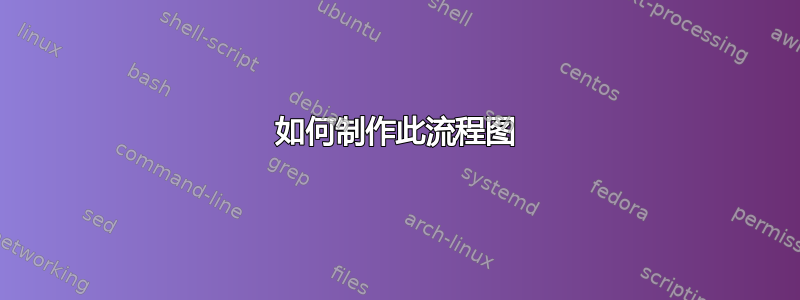
所以我现在看到这个代码,我仍然卡在箭头之间的文字和带有正确和错误表情符号的虚线框中
到目前为止我有这个代码:
\documentclass{article}
\usepackage{fourier}
\usepackage[table,xcdraw,dvipsnames,svgnames,x11names]{xcolor}
\usepackage{tikz}
\usetikzlibrary{shapes,shadows,arrows.meta,
backgrounds,
fit,
matrix,
positioning,
quotes}
\tikzset{mytext/.style={font=\fontfamily{put}\selectfont\tiny,align=center,color=black}
,
rec/.style={mytext,rectangle,minimum height=1cm,minimum width=1.5cm,fill=Green,draw=red!150},}
\begin{document}
\begin{tikzpicture}
\node [rec] (a) {Initial broad high \\throughput \\screening};
\coordinate [right = 2cm of a](b){};
\coordinate [below = 2cm of b](c){};
\node[rec,right=2cm of c](d){Mixed variable\\ Multi-Objective\\ optimization};
\coordinate [right = 2cm of d](e){};
\coordinate [above = 2cm of e](f){};
\node[rec,right=2cm of f](g){Scale-Up};
\coordinate[above=2cm of f](k){};
\node[rec,left=0.5cm of k](l){Further Continuous \\parameter optimization\\ for selected discrete \\ variable};
\node[rec,left=1.2cm of l](m){xd};
\draw[arrow,black] (a. east) -> (b. west);
\draw[arrow,black] (b.east ) |- (d. west);
\draw[arrow,black] (d.west) |- (e.mid east );
\draw[arrow,black] (e. right) |- (f. left);
\draw[arrow,black] (f. right) |- (g. left);
\draw[arrow,black] (f. right) |- (k. left);
\draw[arrow,black] (k. right) |- (l. right);
\draw[arrow,black] (l. right) |- (m. right);
\draw[arrow,black] (b. right) |- (m. left);
\end{tikzpicture}
\end{document}
答案1
这是一种使用绝对坐标来实现的方法,在我看来,这至少在开始时可以提供更多的控制。
从图形设计的角度来看,我不会将您的框图与注释混淆:它们更适合简洁的比较,而用于此的工具是...表格。而就目前的情况而言,可读性肯定是一个问题。
因此,让我们集中注意力于该图表并观察一些特殊之处。
开始
暂时忘掉样式:您将根据需要随时引入它们。从放置 5 个节点(您的块)开始。
% ~~~ place your functional blocks ~~~~~~~~~~~~~~~~~~~~~~~~~~
\node[block] (A) at ( -4, 0) {Initial broad high \\throughput \\screening};
\node[block] (M) at ( 4, 2){xd};
\node[block] (L) at (10, 2){Further Continuous \\parameter optimization\\ for selected discrete \\ variable};
\node[block] (D) at ( 8,-2) {Mixed variable\\ Multi-Objective\\ optimization};
\node[block] (G) at (18, 0) {Scale-Up};
他们的坐标可能是初步的,您可以随时调整它们(=经常编译)。确保它或多或少是您想要的。
正在连接
第一种方法应该是直接将这些节点交叉连接起来。首先不要关心对齐等。
在这样做的同时,在输入之后和输出之前放置 2 个额外点以简化箭头类型和颜色非常有用:
% ~~~ some coordinates ~~~~~~~~~~~~
\coordinate (P1) at (2,0);
\coordinate (P2) at (12,0);
改善连接
基本上你首先要介绍以下内容:
% upper branch
\draw[arr1] (P1) |- (M);
\draw[arr1] (M) -- (L);
...
现在可能发现放置一些文本节点很有用。一旦你理解了 Tikz 的路径思想,就更容易了:
- 路径以...开头
\ - 以。。结束
; - 中间的一切都是“动作”(就像电影里一样)
- 通常你只需要
draw,但你也可以把node// 在这里观察缺失的内容\:
\draw[arr1] (M) -- node[txt]{Finalise\\discrete\\variable\\selection}
(L);
默认情况下,它只是放在midway (或在pos=0.5)两点之间,这里是(M)和(L)。这只是上部反馈回路的一个变体,使用相对坐标中的一些中间点:
\draw[arr1,dashed] (M.east) -- ++(0.5,0) -- ++(0,2)
-| node[txt,pos=.1]{Further\\reduction} (M.north);
相同的想法,在路径结束之前和 Tikz 尝试渲染它之前需要进行更多操作;通过使用pos=.1或,您可以沿着路径移动文本,即在其(较短的)起点和终点之间。
样式 / 格式
它们会随着你的进步而发展。除了将它们移动到 tikzpicture 并使用你的定义之外,你还会看到,我如何尝试使用分层(=重新使用先前的定义)方法来处理箭头和线条。
\begin{tikzpicture}[% ~~~ move styles here ~~~~~~~~~~~~~
>={Stealth}, % replacing all arrow tips
mytext/.style ={font=\fontfamily{put}\selectfont\tiny,
align=center,color=black},
block/.style ={mytext,rectangle,minimum height=1cm,minimum width=1.5cm,
fill=green,draw=red!150},
% ~~~ for all those lines (used hierarchically) ~~~~~~~~~
lnw/.style={line width=2pt},
arr/.style={->,lnw},
arr1/.style={arr,draw=green!50!blue!100},
arr2/.style={lnw,draw=green!50!blue!100},
arr3/.style={arr,draw=teal!70!black!60},
arr4/.style={lnw,draw=teal!70!black!60},
% ~~~ for the text nodes ~~~~~~~~~~~
txt/.style={fill=gray!10,align=center},% or just fill white
]
最后的建议
为了学习目的,我建议执行以下操作:
- 将以下代码复制到新文件中
- 删除节点后的所有内容(或将其注释掉)
- 编译
- 重复并删除较少的代码,即“遍历”连接器等。
这样,您就能更清楚地了解发生了什么,并更好地掌握每行代码的含义。
\documentclass[10pt,border=3mm]{standalone} % more useful during development
\usepackage{tikz}
\usetikzlibrary{arrows.meta}
\begin{document}
\begin{tikzpicture}[% ~~~ move styles here ~~~~~~~~~~~~~
>={Stealth}, % replacing all arrow tips
mytext/.style ={font=\fontfamily{put}\selectfont\tiny,
align=center,color=black},
block/.style ={mytext,rectangle,minimum height=1cm,minimum width=1.5cm,
fill=green,draw=red!150},
% ~~~ for all those lines (used hierarchically) ~~~~~~~~~
lnw/.style={line width=2pt},
arr/.style={->,lnw},
arr1/.style={arr,draw=green!50!blue!100},
arr2/.style={lnw,draw=green!50!blue!100},
arr3/.style={arr,draw=teal!70!black!60},
arr4/.style={lnw,draw=teal!70!black!60},
% ~~~ for the text nodes ~~~~~~~~~~~
txt/.style={fill=gray!10,align=center},
]
% ~~~ place your functional blocks ~~~~~~~~~~~~~~~~~~~~~~~~~~
\node[block] (A) at ( -4, 0) {Initial broad high \\throughput \\screening};
\node[block] (M) at ( 4, 2){xd};
\node[block] (L) at (10, 2){Further Continuous \\parameter optimization\\ for selected discrete \\ variable};
\node[block] (D) at ( 8,-2) {Mixed variable\\ Multi-Objective\\ optimization};
\node[block] (G) at (18, 0) {Scale-Up};
% ~~~ some coordinates ~~~~~~~~~~~~
\coordinate (P1) at (2,0);
\coordinate (P2) at (12,0);
% ~~~ connector paths with text-nodes ~~~~~~~~~~~~~~~~~~~~~
% input
\draw[lnw] (A) -- node[txt]{Select best performing\\discrete variables}
(P1);
% upper branch
\draw[arr1] (P1) |- (M);
\draw[arr1] (M) -- node[txt]{Finalise\\discrete\\variable\\selection}
(L);
\draw[arr2] (L) -| (P2);
\draw[arr1,dashed] (M.east) -- ++(0.5,0) -- ++(0,2)
-| node[txt,pos=.1]{Further\\reduction} (M.north);
% output
\draw[arr] (P2) -- node[txt]{Optimum continuous\\and\\discrete conditions}
(G);
% lower branch
\draw[arr3] (P1) |- (D);
\draw[arr4] (D) -| (P2);
\end{tikzpicture}
\end{document}
答案2
还没有解决方案,只是进行了一些调试以给您一些反馈:
- 看起来你很困惑
\node,\coordinate \nodes 具有形状,因此具有尺寸,因此east等west是不同的点(或坐标)\coordinates 的维度为零,因此east等没有意义
%\documentclass{article}
\documentclass[10pt,border=3mm]{standalone} % more useful during development
% ~~~ commented out all packages not needed here ~~~~~~~~
% \usepackage{fourier}
% \usepackage[table,xcdraw,dvipsnames,svgnames,x11names]{xcolor}
\usepackage{tikz}
\usetikzlibrary{
%shapes,shadows,
arrows.meta,
% backgrounds,
% fit,
% matrix,
positioning,
% quotes
}
%
\tikzset{
mytext/.style={font=\fontfamily{put}\selectfont\tiny,align=center,color=black},
rec/.style={mytext,rectangle,minimum height=1cm,minimum width=1.5cm,fill=green,draw=red!150},% <<< green
arrow/.style={-{Stealth}},
}
\begin{document}
\begin{tikzpicture}
\node [rec] (a) {Initial broad high \\throughput \\screening};
\coordinate [right = 2cm of a] (b); %{}; !!! it's a coordinate, not a node
\coordinate [below = 2cm of b] (c); %{};
\node [rec,right=2cm of c](d){Mixed variable\\ Multi-Objective\\ optimization};
\coordinate [right = 2cm of d] (e); %{};
\coordinate [above = 2cm of e] (f); %{};
\node [rec,right=2cm of f](g){Scale-Up};
\coordinate [above=2cm of f] (k); %{};
\node [rec,left=0.5cm of k](l){Further Continuous \\parameter optimization\\
for selected discrete \\ variable};
\node [rec,left=1.2cm of l](m){xd};
\draw[arrow,black] (a) -- (b);
% \draw[arrow,black] (b.east ) |- (d.west);
% \draw[arrow,black] (d.west) |- (e.mid east );
% \draw[arrow,black] (e. right) |- (f. left);
% \draw[arrow,black] (f. right) |- (g. left);
% \draw[arrow,black] (f. right) |- (k. left);
% \draw[arrow,black] (k. right) |- (l. right);
% \draw[arrow,black] (l. right) |- (m. right);
% \draw[arrow,black] (b. right) |- (m. left);
\end{tikzpicture}
\end{document}





